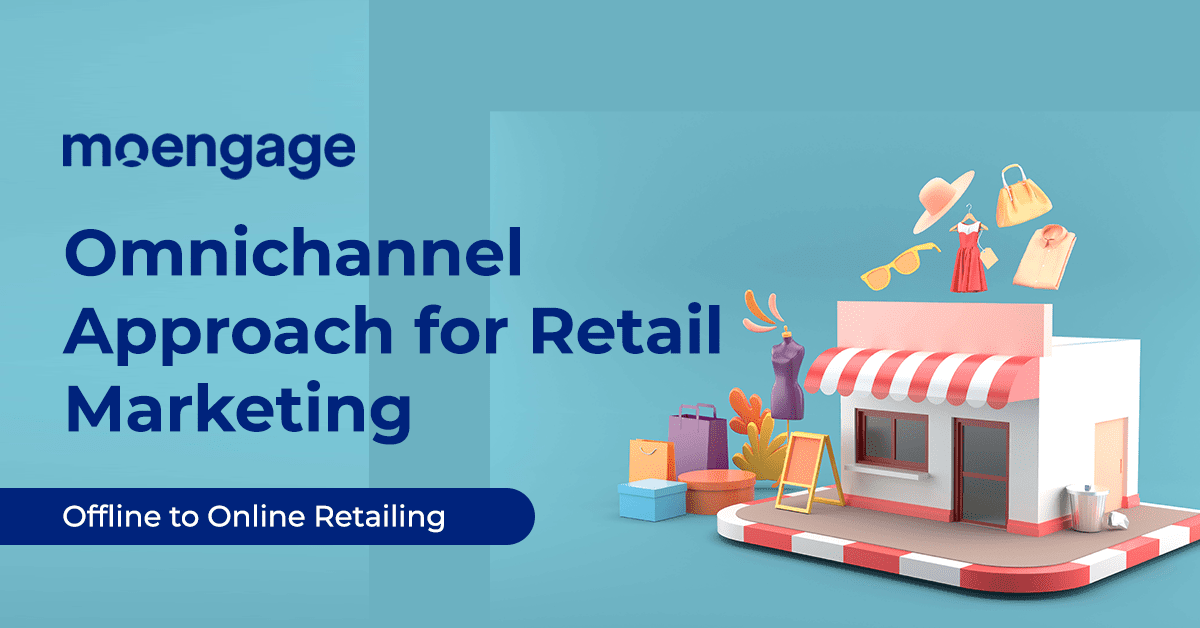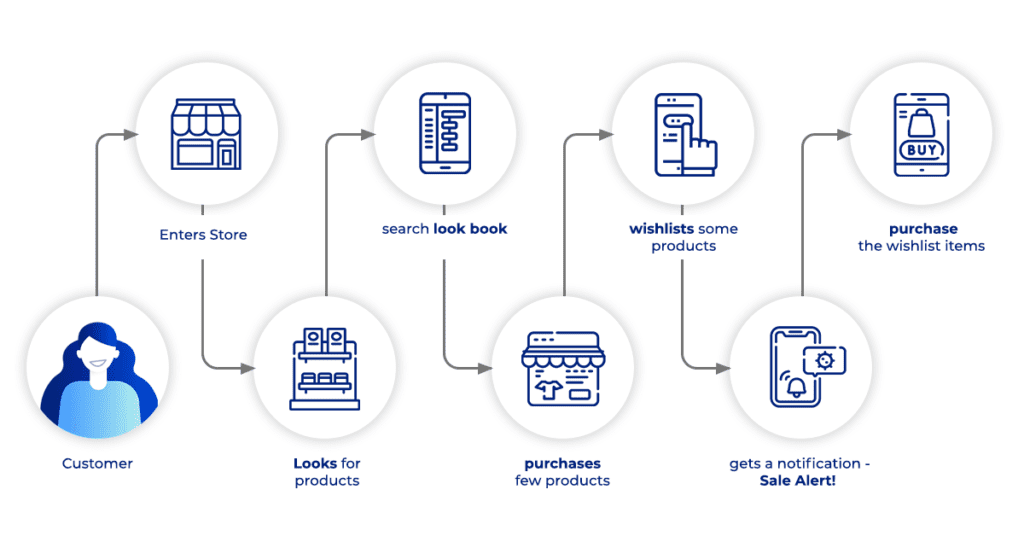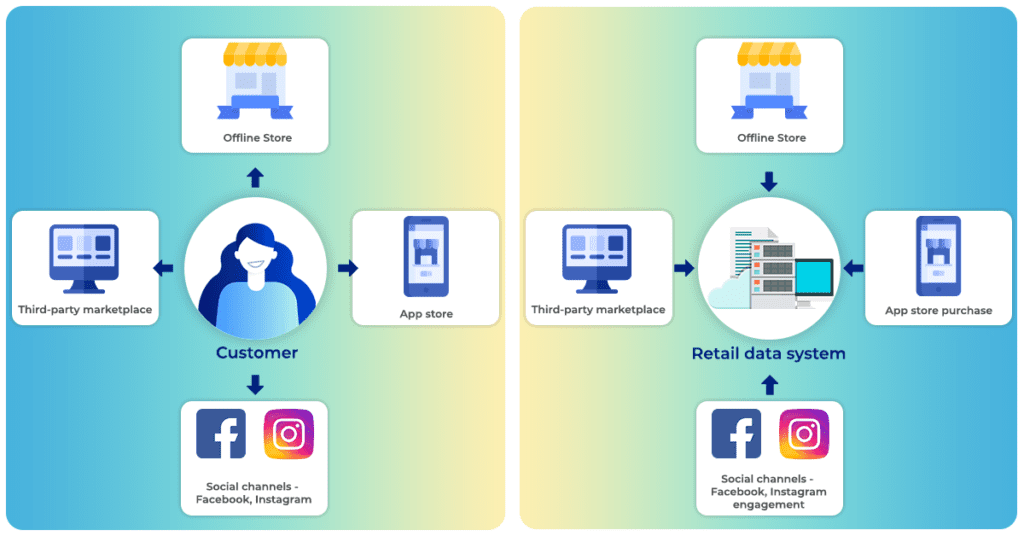Omnichannel Retail Marketing (Part 1): The Need to Know

Reading Time: 5 minutes
Let’s just clear the air for once and for all—retail marketing needs an omnichannel approach. Many retailers today have accepted this fact and got on with their marketing lives. However, for a few, having an offline and online presence is just a makeshift solution because of the ongoing pandemic. Basically, this would mean that having an omnichannel experience is not as important. Allow me to debunk this notion with statistics, facts, and examples.
In this three-part article series, we will help you understand:
- Why the omnichannel approach is crucial for retail marketing? How retailers can use that to convert users both offline to online?
- What channels retail marketing can use and bridge the gap between them?
- Real-life omnichannel marketing campaign examples.
Now let me start part I with some facts on why retailers should opt for omnichannel marketing.
One of the studies on omnichannel retailing by Harvard Business Review revealed that almost 73% of consumers used multiple channels through their entire buying journey. During this study, they also observed consumers exposed to an omnichannel shopping experience accounted for 23% more repeat purchases. They also recorded that consumers presented with synchronized multiple channels experience during the purchase journey favored and recommended such brands.
Bonus Content
|
I think it is safe to say that the omnichannel approach for retail marketing shouldn’t be a makeshift solution. Right, it should be the go-to approach. However, what does exactly having an omnichannel approach mean for retailers?
The Need to Know
Meaning of omnichannel approach for retail marketing- To put it simply, the omnichannel approach is unifying all the core customer-touchpoint channels seamlessly and allowing a smooth customer journey. This is known as the omnichannel customer journey.
In a retail setup, this approach is to have a customer at the center while aligning core offline and online channels through the purchase journey. For retailers, the omnichannel approach is removing the clutter of multiple channels with multiples customers’ actions to be completed. Instead, it is about using only core customer channels and offering a single, smooth experience across all channels. This approach also offer a customer a single view allowing retailers to better understand customer behavior, actions, and preferences.
Why use the omnichannel approach for retail marketing
This approach ensures retailers’ experience is consistent, continuous, convenient, and communicative instead of being pure sales. This approach helps retailers to be there for the customer in need instead of being irrelevant and distracting.
Let us use a visual representation to help you understand why this approach would be the ideal approach for retailers:

As based on the above visual, you can clearly see the 3 crucial reasons why retail marketing needs an omnichannel approach:
1. Omnichannel offers flexibility during a buying journey allowing customers to spend more. The easier and flexible your brand’s buying experience is, the more the customer will spend. So, connect all your offline and online channels seamlessly instead of being siloed to ease your engagement and buying experience. Also,according to IDC research, offering an omnichannel experience will offer 30% higher customer LTV when compared to having a single or siloed multiple channels.
2. Omnichannel allows you to be there for your customers when they need you. With multiple channels with no synchronization, the customer buying experience becomes very distorted. A seamless omnipresent experience will help the customers through their buying journey by offering help in real-time. In fact, Google research says 71% of in-store customers use smartphones for research feel access to the device is crucial to their in-store experience.
3. Omnichannel enables brands to create a continuous dialogue with a customer thereby establishing trust. Siloed channels mean your messaging and engagement are broken and inconsistent, this directly impacts the customer’s outlook of your brand. Even Clickz’s study on the advantages of omnichannel marketing shows that customer retention is 90% higher in this approach.
What it means to have omnichannel experience
To put it simply, it means to have an end-to-end single view. For a customer, this will translate into having multiple channels with a single, unified goal. For a retail brand, this will translate into having a single view of customers across multiple channels. The omnichannel approach allows retail brands to be where the customer is ensuring the micro-moments are not lost.

Omnichannel is the pillar of retention and higher LTV as it allows the customer to remain active, engage more, purchase repeatedly, and return with certainty. The current customer buying pattern shows a retail brand has to be omnipresent on channels that matter to the customer most. This obviously means mixing both offline channels and online channels and bring them together seamlessly.
How it is just not about having an online presence- With new channels emerging every day, retail marketers might be inclined to not only have an app store but also be on all the other online channels. That’s NOT the purpose of the omnichannel approach though. Omnichannel doesn’t definitely mean that you need to be everywhere your customer is because he/she is not buying every time they are online. But it means picking up the right channel—core channels where a customer comes with a buying intention—and connecting on those channels at the right moment.
It is also just not about having an online presence by creating a jazzy app store or website. But about allowing the customer to move from one channel to another in a smooth, logical manner. These channels can be a mix of offline and online, or only online.
How omnichannel approach convert users from offline to online
It’s all about having a connected retail experience. A customer looked at the product in-store but made the purchase on the app store and was offered a look-book to continue shopping on an email. The current pandemic has informed us enough that consumers are ready to buy online and some of them have collected the items in a brick-mortar store but made the payment online. Almost 78% of holiday shoppers who visited a store turned to online search before going into a store, and that’s you can convert your customers from offline to online or vice versa.
All a retail brand needs to do is give an option that is logical and seamless. One of the best examples of using an omnichannel approach during a conversion is Decathlon. The brand currently has started in-store (i.e., brick and mortar store) purchases with online payment or app store purchases with in-store pick-up.
Now what are these specific channels that you need to focus on and how can you stitch them together seamlessly you ask. Well, we will cover these topics and more in part II of the omnichannel approach for the retail marketing series.













